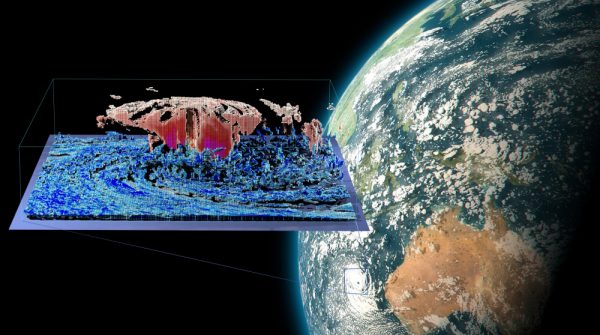It’s an exciting time in supercomputing, with functional exascale systems beginning to consistently run crucial workloads. The Frontier supercomputer at Oak Ridge National Laboratory (ORNL) – which remains the world’s only publicly acknowledged, operational exascale supercomputer – first hit the Top500 list last May, but is just beginning to become accessible for more researchers. Now, we’re learning about some exciting new climate modeling that’s being run on the exascale system by a team led by researchers from Sandia National Laboratories.
Operating under the auspices of the Energy Exascale Earth System Model (E3SM) collaboration, the group developed a cloud-resolving atmosphere model: Simple Cloud Resolving E3SM Atmosphere Model (SCREAM). Resolving clouds is a famously challenging task for climate models, which typically operate at resolutions too coarse to represent clouds.
“Traditional Earth system models struggle to represent clouds accurately,” explained Mark Taylor, a researcher at Sandia and chief computational scientist for E3SM. “This is because they cannot simulate the small overturning circulation in the atmosphere responsible for cloud formation and instead rely on complex approximations of these processes.”
Running that kind of fine-resolution model, of course, means serious computational firepower – and you can’t do better than Frontier on that front. The Exascale Computing Project granted the E3SM developers a 10-day window on Frontier, where the GPU-optimized SCREAM model was able to complete a simulated year of the global climate in a single day with resolved clouds and a 3.25km resolution.

“We have created the first global cloud-resolving model to simulate a world’s year of climate in a day,” Taylor said, adding that the achievement on Frontier was “ushering in a new era of accuracy.”
Resolving clouds is an important task for climate models because (as one might already know) clouds are deeply associated with precipitation, which is of great interest to climate researchers as they work to predict how precipitation in various regions will change with the warming climate. With the SCREAM team’s accomplishment, that kind of predictive ability is now within reach.
“This next-generation program has the potential to substantially reduce major systematic errors in precipitation found in current models because of its more realistic and explicit treatment of convective storms and the atmospheric motions responsible for cloud formation,” Taylor said.
Expect more research powered by Frontier to start cropping up in the coming months as the supercomputer begins to host more workloads and as researchers submit their work for consideration in this year’s Gordon Bell Prizes – one of which, fittingly, will be a prize for HPC-powered climate research.
To learn more about this research, read the reporting from Sandia National Laboratories.




























































